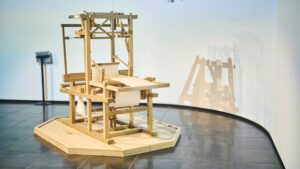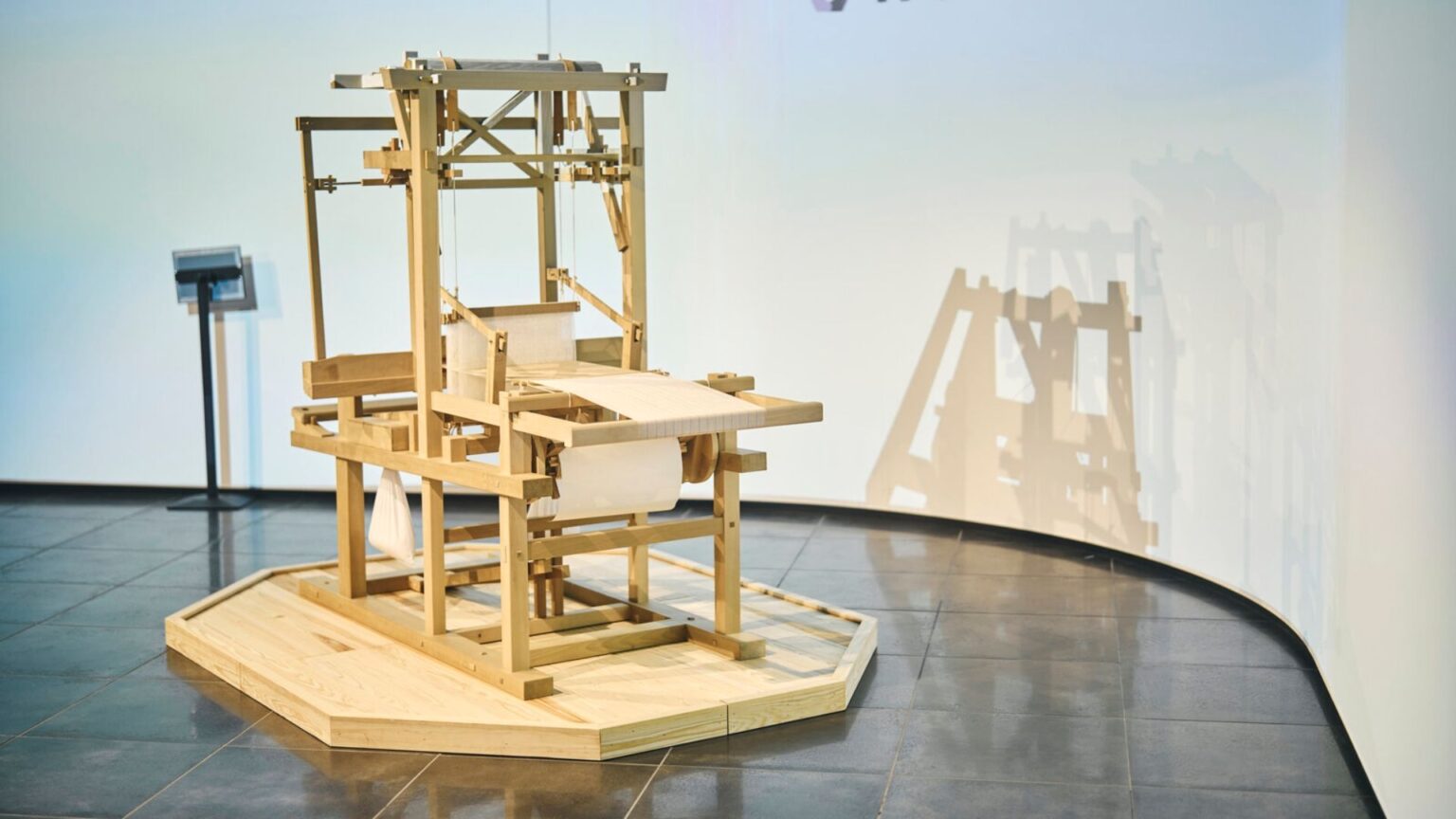Back at CES in 2020, Toyota revealed its plan to create a new town in Japan, a hydrogen-powered, fully connected mini-metropolis on 175 acres of land near Mt. Fuji. In this enclave, the enormous global automaker could test various high-tech ideas like artificial intelligence, autonomy, futuristic robots, groundbreaking personal mobility solutions, and even smart homes. Called the Woven City, this project’s name is a nod to the earliest days of Toyota, as the company got started building looms to produce textiles. Bringing things full-circle, a replica of a 136-year-old loom was recently installed in the Woven City to honor that history.
Where The Ancient And Modern Intersect
This particular wooden weaving machine was invented by Sakichi Toyoda – yes, that’s Toyoda with a “d” – in 1890, forefather of the modern Toyota – with a “t” – we know and love today. He was just 23 years old when he designed this loom, which was created to ease his mother’s burdens as she spent unending hours weaving fabric. Displaying such a device in the Woven City visitor center is a reminder of the company’s rich – and arguably, humble – heritage.
According to an article published by Toyota, Toyoda’s first patent explains that his loom was designed to reduce the amount of effort it took to produce cloth by eliminating the need to feed yarn by hand. “Sakichi’s loom could be worked with one hand instead of two,” the article explains, “using a karakuri mechanism to pass through the horizontal thread. The weaver could also wind the cloth without leaving their seated position, which could be adjusted to suit their physical build.” Foreshadowing the work that goes into building modern cars and trucks, Toyoda even focused on ergonomics back in the late 1800s.
Commemorating A Monumental Achievement
A loom similar to the one at the Woven City is on display in Nihonbashi at the entrance to the Woven by Toyota offices. This machine was made by Masamitsu Kenmochi, a veteran that worked at the automaker for 51 years. Before his well-deserved retirement, Kenmochi oversaw the company’s wooden mold workshop that’s part of the Powertrain Administration Department. While building this historical piece of equipment, he was impressed by the enormity of Toyoda’s achievement in designing and building this loom.
Similarly, Kenmochi’s colleague, Tsuyoshi Nanba said, “The finished loom produces cloth with an incredibly consistent and uniform weave. It isn’t tiring to operate and is sturdy, so it doesn’t break down. Everything contributes to making life easier for the weaver.” And that was ultimately Toyoda’s goal.
“Ninety years ago, our predecessors shifted Toyota’s business from looms to automobiles. Today, we are at another point of complete change, into a mobility company,” said Kenmochi. “I believe this transformation is underpinned by all of your hard work. Please continue to go forward with pride and courage,” he added.
From Alfa Romeo to GM, Hyundai to Volkswagen, every automaker has a unique backstory. Regardless of the brand, this heritage is always worth remembering, and in the case of Toyota, celebrating, too.
Read the full article here



